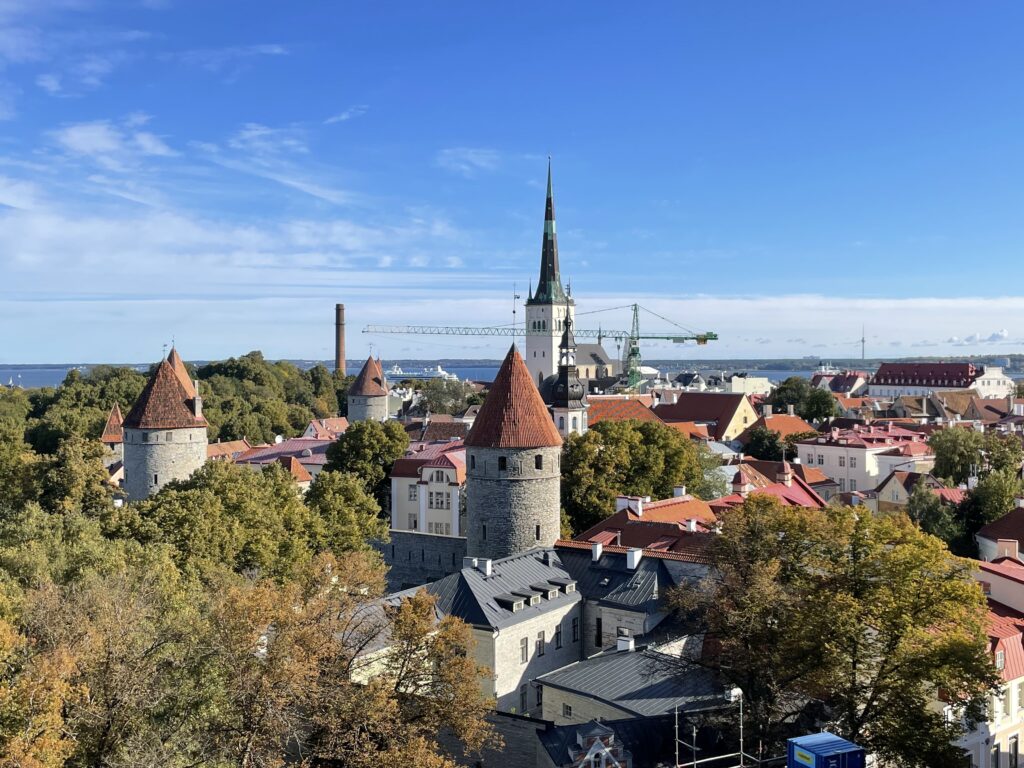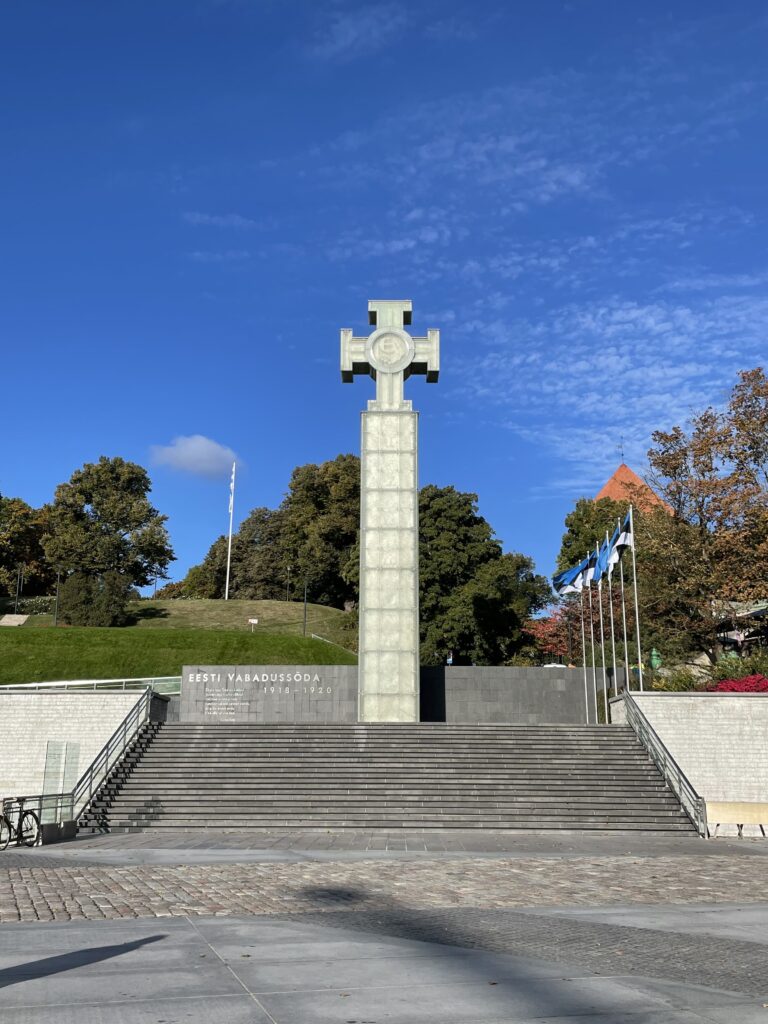Sitting on the southern shores of the Gulf of Finland, Tallinn is the capital and largest city of Estonia. In fact, it houses a third of the country’s entire population, and it is also its main economic and cultural hub, as well as its main tourist destination.
The city is known for its beautiful and well preserved medieval old town, which is a UNESCO World Heritage site. Tallinn houses a series of imposing fortifications, and various decorated churches and ancient buildings, especially on and around the Toompea hill. Outside the center is a mostly residential and commercial area, but some attractions can also be found here.
Best times to visit Tallinn and how to get there
Winters are cold in Tallinn, although milder than in other cities in Northern Europe, thanks to its position on the sea. Freezing temperatures are common until April, and again starting in October. Summer is the best time to visit Tallinn, as daytime temperatures hover around 20 °C, but nighttime temperatures might still go under 10 °C. Summer is also the wettest period of the year, as rain is more common in July and August, but precipitation is quite uniform all year. According to a study in 2021, Tallinn has the most unpredictable weather among all European capitals.
Tallinn is served by the largest airport in Estonia, which has connections to many European cities, but no intercontinental flights. A common way to reach Tallinn is coming by boat from Helsinki, which is located just across the sea in Finland. Up to 20 ferries depart daily from the port of Helsinki toward Tallinn, and a one-way journey might take between one and a half hours and three and a half hours, depending on the ferry. All ferries can also transport cars.
The city can also be reached by train, and it is the main railway hub of Estonia. Coming from Latvia by train requires a change in the border town of Valga. For international travelers, it is easier to take a bus, since Tallinn has direct connections to Riga and Vilnius, along with most cities in Estonia. It is also easy to reach the city for tourists coming by car, since Tallinn sits at the northern end of the Via Baltica European route, which also passes through Riga, Kaunas, and Warsaw, ending in Prague.
Position of Tallinn in Estonia (edited from a work by Nzeemin, Wikimedia Commons, CC BY-SA 4.0).
History of Tallinn
While the area around Tallinn has been inhabited since prehistoric times, the city only began to develop in the 11th century, as a fort on the Toompea hill. The town grew as a port along the trade routes of the Baltic Sea, and was taken by the Kingdom of Denmark in 1219. Tallinn was then known as Reval, and became the northermost member of the Hanseatic League, an alliance of market towns in Northern Europe.
During the Late Middle Ages and the Early Modern period, Reval was the most significant port and fortified position in the area, and passed from Denmark to the Teutonic Knights in 1346, and then to Sweden in 1561. During the Great Northern War between Russia and Sweden, the town was besieged and conquered by the Russians in 1710, along with all of Estonia and Livonia. Reval remained a relevant port and began to industrialize in the 19th century.
In 1918 Estonia proclaimed its independence from the Russian Empire in Reval, and the city changed name to Tallinn. After a brief period under German occupation at the end of World War I, Tallinn became the capital of the newly independent Estonia, until it was invaded by the Soviet army during World War II. Estonia was occupied by Nazi Germany from 1941 until 1944, when it was again occupied by the Soviet Union.
Tallinn hosted some events of the 1980 Summer Olympics, that were held mostly in Moscow. In 1991, Estonia restored its independence, with Tallinn as its capital. The city has since developed into a tourist destination, known for its well preserved medieval old town, which became a UNESCO World Heritage site in 1997.
What to see and do in Tallinn
The oldest part of the city is located on the Toompea hill, which dominates the center of Tallinn. Here is the Toompea Castle. Originally built under Danish rule between the 13th and 15th century, the complex was later reworked several times, and now houses the Parliament of Estonia. The castle features the Pikk Hermann, a medieval tower considered one of the symbols of the city.
Just in front of the Toompea Castle is the Alexander Nevsky Cathedral, built at the end of the 19th century. The church is beautifully decorated and features the largest dome in the city. The oldest church in Tallinn, known as St. Mary’s Cathedral or Toomkirik, is located not far from there. The Toomkirik was founded in the 13th century, and was later reworked and expanded. The church is mostly in Gothic style, and features various artworks and funerary monuments. In front of this church is a panoramic point that offers a great view over the western side of Tallinn. Other viewing platforms are located at the northern and eastern edge of the Toompea hill, with the eastern one being the best point to enjoy a view over the old town of Tallinn.
View of the old town of Tallinn.
After descending from the Toompea hill by going through the narrow medieval roads, a short walk allows to reach the Town Hall Square, the main square of the old town. Here is the large Town Hall, a beautiful Gothic building with a well preserved stone structure and a tall tower. Erected in the 14th century, this is the oldest town hall in all of the Baltic region and Scandinavia. On top of the tower is a weather vane known as Old Thomas, which dates from the 16th century and is regarded as a symbol of Tallinn.
In the northern part of the old town sits St. Olaf’s Church, built in the Late Middle Ages. This church is known for its tall spire, which reaches a height of 124 meters. This makes St. Olaf’s Church one of the tallest in the world, and the tallest in Estonia and the Baltic States. The similar-looking St. Nicholas Church is instead located south of the Town Hall Square. Built in the 13th century, this church is now an art museum, and houses the Danse Macabre by Bernt Notke, one of the most notable artists of the 15th century from the Baltic region.
Tallinn Town Hall.
Other museums in the old town include the Estonian History Museum, located just north of the Town Hall Square and hosted in the historic building of the Great Guild. This museum has exhibitions on the history of Tallinn, and includes several ancient artifacts. The Estonian Maritime Museum is instead dedicated to the history of navigation in Estonia, and it is housed inside the Fat Margaret, a large 16th-century tower placed at the northern end of the old town.
The old town is almost enitrely surrounded by ancient walls, which were originally built in the Late Middle Ages and then restored and expanded. Along these walls are a series of towers and gates, the most notable of which is the Viru Gate. The road that goes through this gate is now one of the main shopping streets in the city, and runs to the east of the Town Hall Square. Around the same area are various narrow medieval streets with several traditional buildings.
Medieval city walls of Tallinn.
At the southern end of the old town is Freedom Square, a large plaza that hosts the Victory Column, a tall monument inaugurated in 2009 that commemorates the victory in the Estonian War of Independence, fought against the Russians between 1918 and 1920. Next to this square is a large park and the Kiek in de Kök, a 15th-century artillery tower located along the road that goes up toward the Toompea Castle. Nearby are also the Vabamu Museum of Occupations and Freedom, a museum dedicated to the history of Estonia in the period of the Soviet and Nazi occupation, and the 19th-century Charles’ Church, built in Romanesque Revival style. The old town is also the best place to eat authentic Estonian food, as many traditional restaurants are located here.
War of Independence Victory Column in Freedom Square.
Outside the old town are more modern buildings and landmarks. One of the most notable of these is the Linnahall, a multi-purpose venue built for the 1980 Summer Olympics on the shore near the port, which now sits abandoned. Next to the Linnahall is the Contemporary Art Museum of Estonia, while a bit more west along the coastline is the Seaplane Harbour, a museum located on a small port which houses a 1930s submarine. Nearby is the Kalamaja Cemetery Park, which was once the oldest cemetery in the city and was destroyed and turned into a park by Soviet authorities in 1964.
To the east of the old town is the Kadriorg Palace, an 18th-century Baroque palace surrounded by a large park. The palace is richly adorned with elaborate decorations, and now houses an art gallery. Next to the Kadriorg Palace is the Kumu Art Museum. This is one of the largest art museums in Northern Europe, and houses a large collection of works from Estonian artists. A bit more east is the Tallinn Song Festival Grounds, a large auditorium that hosts the Estonian Song Festival. Usually held every five years, this is one of the largest choral events in the world, and features over 30,000 singers from over 1,000 choirs. The next edition will take place in July 2025.
The eastern outskirts of the city house the large park of the Tallinn Botanical Gardens, surrounded by a forest, and the Tallinn TV Tower, which is 314 meters tall and has an observation deck at a height of 170 meters. Meanwhile, the main landmarks in the western outskirts of Tallinn are the Tallinn Zoo and the Estonian Open Air Museum, which features a reconstruction of a traditional village.
Tallinn is also a great starting point to explore the rest of Estonia, and day trips to various destinations in the north of the country are possible. The second-largest city in Estonia, Tartu, can be reached in about 2 hours by car, bus, or train, and tourists can continue toward Latvia from there. Other important Estonian cities such as Narva and Pärnu are also not too far away. Helsinki, the capital of Finland, can be easily reached by taking a ferry from Tallinn.






